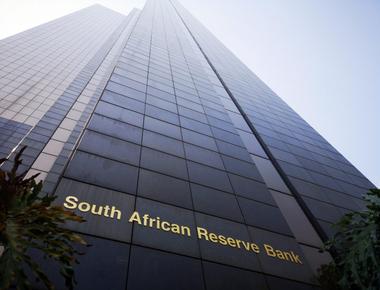

Introduction
The Bank of England (BoE) base rate — also known simply as the Bank Rate — is one of the most important levers of monetary policy in the United Kingdom. It determines the cost of borrowing, influences inflation, affects savings, and impacts the wider economy in profound ways.
This article explores in depth:
- What the base rate is and how it works
- Why and how the BoE sets it
- Its transmission through the economy
- How it affects households, savers, and businesses
- Historical trends and the 2025 outlook
- Key risks, trade-offs, and insights for individuals and investors
What Is the Bank of England Base Rate?
Definition
The base rate is the interest rate that the Bank of England charges commercial banks for borrowing money or pays them for holding deposits. It serves as the benchmark for virtually all other interest rates across the UK financial system.
In practical terms:
- When the BoE raises the base rate, borrowing becomes more expensive.
- When the BoE cuts the rate, borrowing becomes cheaper.
This single rate underpins the pricing of mortgages, personal loans, savings accounts, and business financing.
Why It Matters
The BoE base rate:
- Signals the stance of monetary policy — whether the Bank is tightening or loosening.
- Influences borrowing and saving behavior across households and firms.
- Serves as a tool to control inflation and support economic stability.
- Impacts the exchange rate and thus the price of imported goods.
- Shapes expectations in financial markets and among businesses.
When inflation is high, the BoE typically raises the base rate to cool demand. When the economy slows or inflation is low, it cuts the rate to encourage spending and investment.
How the Bank of England Sets the Base Rate
The Role of the Monetary Policy Committee (MPC)
The Monetary Policy Committee (MPC) is the body within the Bank of England responsible for setting the base rate.
It meets roughly eight times per year to review economic data, including:
- Inflation trends (CPI)
- Employment and wage growth
- GDP growth and productivity
- Consumer spending
- Global market conditions
Each of the nine members of the MPC votes on whether to raise, lower, or maintain the base rate.
Inflation Target
The UK government mandates that the BoE maintain an inflation rate of 2% (CPI) over the medium term.
To achieve this, the BoE adjusts the base rate as needed:
- If inflation exceeds 2%, rates are likely to rise.
- If inflation is below 2%, rates are likely to fall.
The MPC Decision Process
At each meeting:
- Economic data are reviewed and forecasts updated.
- Risks are evaluated — both to growth and inflation.
- Members debate and cast their votes.
- The final decision is announced publicly, along with meeting minutes and a Monetary Policy Summary explaining the rationale.
Transparency in this process helps guide market expectations, which is crucial for monetary policy effectiveness.
How Base Rate Changes Affect the Economy
The Transmission Mechanism
When the BoE changes the base rate, the effects ripple throughout the economy through several transmission channels:
1. Lending and Borrowing Costs
- Higher base rate → banks face higher costs → they raise interest rates on mortgages, loans, and credit cards.
- Lower base rate → cheaper borrowing → encourages households and firms to take loans and spend.
2. Savings Returns
- Higher base rate → banks often increase interest on savings accounts to attract deposits.
- Lower base rate → savers earn less on deposits.
3. Consumer Spending and Investment
Lower borrowing costs stimulate consumer demand and business investment.
Higher rates, conversely, tend to reduce both, slowing the economy.
4. Inflation
By cooling or stimulating demand, base rate changes help the BoE control inflation around its 2% target.
5. Exchange Rate and Capital Flows
Higher interest rates attract foreign investment, strengthening the pound (£).
Lower rates can weaken the currency, making exports more competitive but raising import costs.
6. Expectations
Future expectations about inflation and rates often influence economic behavior before the BoE even acts. This makes communication — or “forward guidance” — critical.
Impact of bank of England’s base rate on Different Stakeholders
1. Households and Borrowers impact on base rata
- Variable-rate mortgages: Monthly payments rise when the base rate increases.
- Fixed-rate mortgages: Payments remain stable until the deal expires.
- Personal loans and credit cards: Interest costs may rise with the base rate.
- Debt affordability: Higher base rates increase the burden of variable debt, affecting disposable income.
2. Savers impact on base rate
- Savers typically benefit from higher base rates, as banks increase returns on savings products.
- However, the adjustment is often slower or smaller than the increase for borrowers.
- Savers should monitor rate announcements to lock in attractive fixed-term accounts before future cuts.
3. Businesses impact on base rate
- Rising rates increase the cost of capital, discouraging expansion or hiring.
- Falling rates stimulate investment, but can also signal economic weakness.
- Cash-rich firms may benefit from higher interest income on deposits.
4. The Housing Market impact on base rate
- Lower base rates fuel housing demand and push prices upward.
- Higher rates cool mortgage demand, reducing upward pressure on property prices.
5. Investors impact on base rate
- Lower rates support equities (especially growth stocks) as borrowing costs decline.
- Higher rates can hurt long-term bonds and property valuations but benefit cash instruments.
Historical Perspective: The Base Rate Over Time
| Year | Key Rate | Economic Context |
|---|---|---|
| 1979 | 17% | To combat double-digit inflation |
| 1992 | 10% | Post-recession policy tightening |
| 2008 | 0.5% | Global Financial Crisis emergency measure |
| 2016 | 0.25% | Post-Brexit vote stimulus |
| 2020 | 0.1% | COVID-19 pandemic crisis support |
| 2023 | 5.25% | Post-pandemic inflation surge |
| 2025 | 4.00% | Gradual normalization amid slowing growth |
Historically, the base rate has reflected the economic climate — from post-war inflation battles to the low-rate era after the 2008 financial crisis and the COVID-19 pandemic.
The 2025 Context on Bank of England base rate
As of November 2025, the Bank Rate stands at 4.00%.
The BoE reduced it from 4.25% earlier in the year amid signs of easing inflation and sluggish growth.
Why a Cut in 2025?
- Inflation, while above target (around 3.6%), has been trending downward.
- Economic growth remains weak, with soft business confidence.
- Mortgage holders and small businesses have faced elevated borrowing costs since 2023.
The decision reflects the MPC’s attempt to balance controlling inflation with supporting the economy.
The Trade-Offs Facing the Bank of England
1. Inflation vs Growth
Raising rates helps cool inflation but risks slowing the economy.
Cutting rates supports growth but may reignite inflationary pressures.
2. Lagged Effects
Interest rate changes take 6–18 months to fully affect inflation and output.
The BoE must therefore act preemptively, often on forecasts rather than confirmed data.
3. Global Influences
- US Federal Reserve policy affects global capital flows.
- Commodity prices (especially energy) shape UK inflation.
- A strong or weak pound affects import costs and competitiveness.
4. Financial Stability Risks
- Very low rates can fuel asset bubbles.
- Very high rates can stress households and firms with large debts.
What the Base Rate Means for You
For Borrowers
- Prepare for potential payment shocks on variable-rate debt.
- Consider fixing mortgage rates if future increases are likely.
- Use rate cuts as an opportunity to refinance at lower cost.
For Savers
- Track which banks pass on rate changes fastest.
- Compare savings accounts regularly; many lag behind the official rate.
- Lock in fixed rates during times of high base rates.
For Businesses
- Model how interest rate changes affect profitability and investment returns.
- Manage debt maturities carefully — consider hedging interest rate risk.
- Keep liquidity reserves during tightening cycles.
For Investors
- Rising rates can hurt long-duration bonds but benefit short-term cash funds.
- Lower rates generally lift stock valuations and risk appetite.
- Follow MPC meeting outcomes to anticipate market movements.
Outlook: The Future Path of the Base Rate
Determining Factors
- Inflation trajectory: Returning sustainably to 2%.
- GDP growth: Whether the economy rebounds or stagnates.
- Labour market: Wage pressures and employment trends.
- Global factors: Geopolitics, oil prices, and global central bank actions.
Possible Scenarios
- Gradual Normalization
Inflation falls, allowing the BoE to slowly reduce rates to 3–3.5% by late 2026. - Sticky Inflation
Inflation remains above 3%, forcing the BoE to hold at 4% or raise again. - Sharp Downturn
A global slowdown could push the BoE to cut rates more aggressively to support demand.
Market Expectations
Analysts expect the BoE to remain cautious — avoiding premature cuts until inflation clearly stabilizes near the 2% target.
Practical Tips for Navigating a Changing Base Rate
- Track MPC announcements — decisions and meeting minutes reveal forward guidance.
- Diversify your finances — mix of fixed and variable rates protects against volatility.
- Reassess budgets — especially if carrying debt or managing mortgages.
- Stay informed — monitor inflation and employment data to anticipate BoE policy moves.
- Review investment strategy — align portfolio risk levels with rate trends.
Conclusion
The Bank of England base rate remains the cornerstone of the UK’s monetary and financial system.
From homeowners and savers to corporations and investors, everyone feels its influence.
Understanding how it works empowers you to:
- Make smarter borrowing and saving choices
- Anticipate economic trends
- Protect against financial risks
- Seize opportunities in changing markets
As of 2025, the BoE continues to walk a tightrope — balancing inflation control with economic stability. Whether the rate rises or falls next, its decisions will continue shaping the future of every pound in the British economy.
Share
Quick Links






![Types of Bonds in the United Kingdom [A Comprehensive Guide Covering England, Wales, Scotland, and Northern Ireland ]](/static/786e60f27f5a174ee0b4295e559b0e01/144fe/im.jpg)